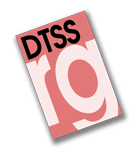La expansión aplicativa de la ley integral para la igualdad de trato y la no discriminación: secuelas sociolaborales. (RI §425873)

The applicable expansion of the comprehensive law for equal treatment and non-discrimination: social and labor sequels -
Inmaculada Ballester Pastor
La Ley 15/2022, de 12 de julio, integral para la igualdad de trato y la no discriminación es una Ley de gran amplitud y una Ley de garantías que sirve como marco normativo mínimo para proteger el derecho a la igualdad y para prohibir la discriminación con carácter general, superando los déficits existentes en normas sectoriales que solamente contemplan este derecho a la igualdad desde una determinada perspectiva. El presente estudio se centra en analizar la concreta extensión aplicativa de la Ley, ciñéndonos a las previsiones que tienen contenido laboral, y tratando de forma especial las principales novedades que ahora se introducen.
I. LA GRAN AMPLITUD DE UNA LEY DE MÍNIMOS, DE GARANTÍAS E INTEGRAL.- II. LA PROYECCIÓN DEL DERECHO DE IGUALDAD SOBRE EL TRABAJO POR CUENTA AJENA Y EL TRABAJO POR CUENTA PROPIA.- III. EL DERECHO A LA IGUALDAD DE TRATO: SU DELIMITACIÓN Y DIFERENCIACIÓN RESPECTO A LAS POSIBLES FORMAS DE DISCRIMINACIÓN PROHIBIDAS.- IV. LAS NUEVAS CAUSAS DE DISCRIMINACIÓN QUE SE INTRODUCEN EN LA LEY 15/2022: LAS CONSECUENCIAS LABORALES DE SU INCLUSIÓN. 4.1. La enfermedad o condición de salud, el estado serológico y/o predisposición genética a sufrir patologías o trastornos. 4.2. La orientación o identidad sexual y la expresión de género como causa de discriminación.- V. LA DESCRIPCIÓN GENÉRICA DE LAS EXCEPCIONES A LA PROHIBICIÓN DE DISCRIMINACIÓN.- VI. LAS MEDIDAS DE ACCIÓN POSITIVA DE LA LEY.- VII. LAS NUEVAS “MODALIDADES” DE DISCRIMINACIÓN, EN PARTICULAR, LA DISCRIMINACIÓN POR ASOCIACIÓN Y LA DISCRIMINACIÓN MÚLTIPLE.- VIII. REFLEXIONES FINALES.
Law 15/2022, of July 12, comprehensive for equal treatment and non-discrimination is a Law of great breadth and a Law of guarantees that serves as a minimum regulatory framework to protect the right to equality and to prohibit discrimination in general, overcoming existing deficits in sectoral regulations that only contemplate this right to equality from a certain perspective. This study focuses on analyzing the specific application extension of the Law, sticking to the provisions that have labor content and dealing in a special way with the main novelties that are now being introduced.
I. THE GREAT AMPLITUDE OF A LAW OF MINIMUMS, GUARANTEES AND COMPREHENSIVE.- II. THE PROJECTION OF THE RIGHT TO EQUALITY ON EMPLOYMENT AND SELF-EMPLOYMENT.- III. THE RIGHT TO EQUAL TREATMENT: ITS DELIMITATION AND DIFFERENTIATION WITH RESPECT TO THE POSSIBLE FORMS OF PROHIBITED DISCRIMINATION.- IV. THE NEW CAUSES OF DISCRIMINATION THAT ARE INTRODUCED IN LAW 15/2022: THE EMPLOYMENT CONSEQUENCES OF THEIR INCLUSION. 4.1. The disease or health condition, the serological status and/or genetic predisposition to suffer pathologies or disorders. 4.2. Sexual orientation or identity and gender expression as a cause of discrimination.- V. THE GENERIC DESCRIPTION OF THE EXCEPTIONS TO THE PROHIBITION OF DISCRIMINATION.- VI. THE POSITIVE ACTION MEASURES OF THE LAW.- VII. THE NEW “MODALITIES” OF DISCRIMINATION, IN PARTICULAR, DISCRIMINATION BY ASSOCIATION AND MULTIPLE DISCRIMINATION.- VIII. FINAL THOUGHTS.
